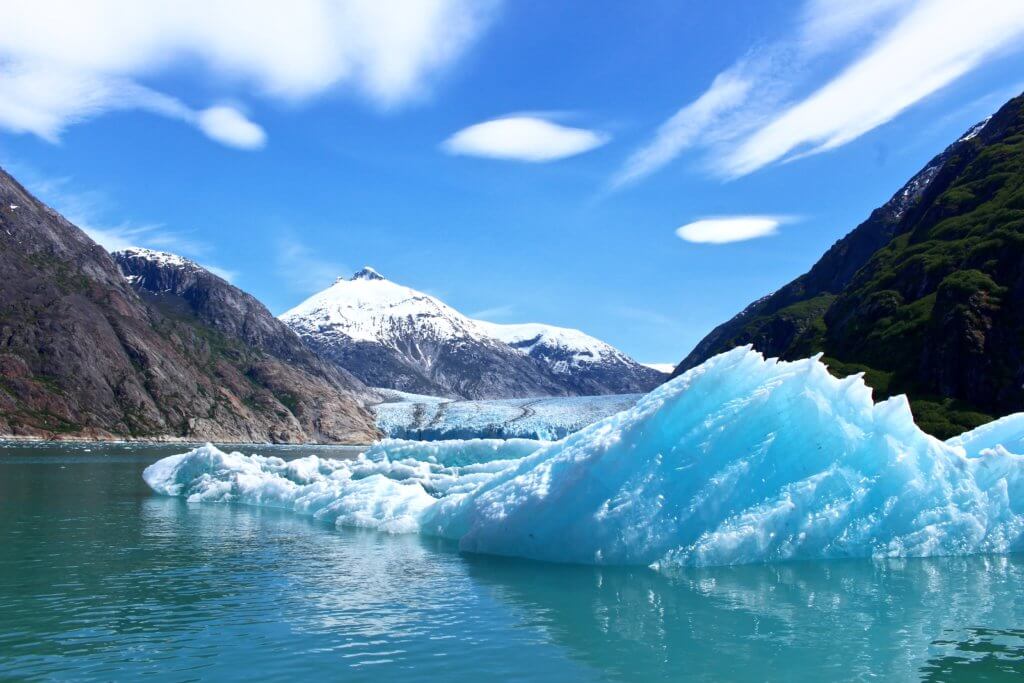Tracy Arm–Fords Terror Wilderness Area
“A wild, unfinished Yosemite”
The famed naturalist, John Muir, referred to the Tracy Arm area as, “A wild, unfinished Yosemite.” This glacial fjord is renowned for its pristine waterfalls, towering icebergs, and cliffs that rise from sea level to 4,000 feet. At 32-miles long and averaging just a mile wide, the unique features of Tracy Arm are contained in a relatively small geographical space, adding to the dramatic beauty of the area.
The glaciers of the region branch off the 500 square-mile Stikine Icefield, where snowfall often exceeds 100 feet per year. As snow builds in this accumulation zone, the resulting ice begins to overflow into the valleys, forming glaciers. Currently, the rate of melt at the face of the glaciers exceeds the rate of their downhill flow, causing glacial retreat. For 10,000 years the icefield has experienced a general retreat with periodic stages of advancement.

Our vessels navigate the entire length of the arm, making stops in view of both the Sawyer and South Sawyer Glaciers (as ice conditions permit). In the event that conditions prevent the navigation of Tracy Arm, we may modify the itinerary by exploring Endicott Arm, another beautiful fjord carved by the Dawes Glacier. DIB excursions will provide the opportunity to view the majesty of the area in an up-close and personal manner.
Though the landscape is rugged, Tracy Arm plays host to a variety of wildlife species. Sure-footed Mountain goats scale the rocky cliffs, bears are sometimes seen foraging the tide-lines, and seals take refuge among the ice flows.
As with all tidewater glacier viewing, be sure to keep your finger near your camera’s shutter. You never know when spectacular displays of calving might occur!
“[Tracy Arm] fjord is…shut in by sublime Yosemite cliffs, nobly sculptured, and adorned with waterfalls and fringes of trees, bushes, and patches of flowers; but amid so crowded a display of novel beauty it was not easy to concentrate the attention long enough on any portion of it without giving more days and years than our lives could afford….” – John Muir, 1880

